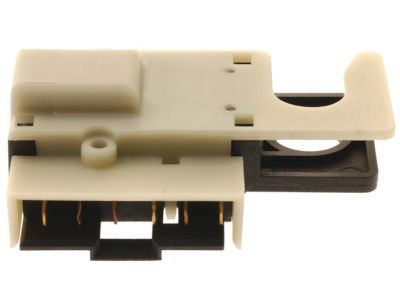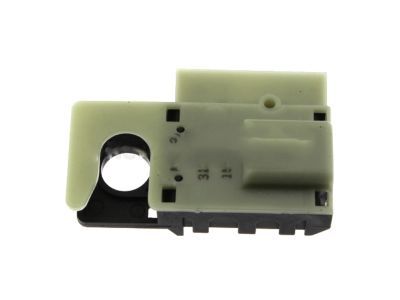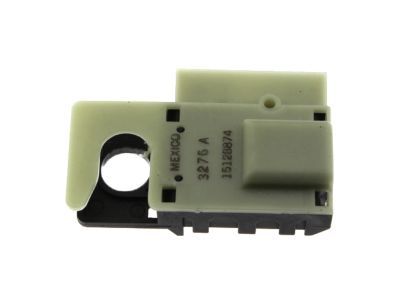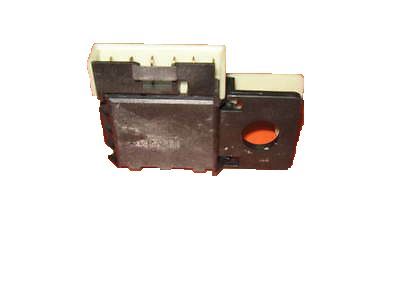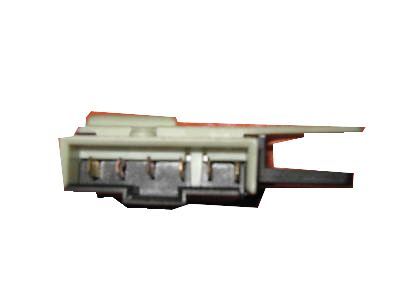
My Garage
My Account
Cart
Genuine Chevrolet Trailblazer Brake Light Switch
Brake Lamp Switch- Select Vehicle by Model
- Select Vehicle by VIN
Select Vehicle by Model
orMake
Model
Year
Select Vehicle by VIN
For the most accurate results, select vehicle by your VIN (Vehicle Identification Number).
3 Brake Light Switches found
Chevrolet Trailblazer Sensor Assembly, Brake Pedal Position
Part Number: 13597423$35.64 MSRP: $67.24You Save: $31.60 (47%)Ships in 1-2 Business DaysChevrolet Trailblazer Sensor Kit,Brake Pedal Position
Part Number: 25799118$38.72 MSRP: $118.13You Save: $79.41 (68%)Ships in 1-2 Business DaysChevrolet Trailblazer Switch,Stop Lamp
Part Number: 15128874$34.36 MSRP: $64.40You Save: $30.04 (47%)
Chevrolet Trailblazer Brake Light Switch
The Brake Light Switch in Chevrolet Trailblazer mainly functions to check the brake light whether it is working or not to alert other motorists when the brakes are applied. Sited in the vicinity of the brake pedal this turns on when the latter is depressed and turns on the brake lights. Some common problems associated with it are the age-related problems or corrosion or dirt build up that affects the lights. Different types of Brake Light Switches have been used on Chevrolet Trailblazer and most of the differences are as a result of the wear and tear or corrosion of the switch. Some of the ways that can be used can include inspecting wires and cleaning contacts to name a few as a way of checking the Brake Light Switch to ensure it lasts longer. It is important to act quickly to 'clean' or 'replace' to protect the integrity of the Chevrolet trailblazer's brake system.
Each OEM Chevrolet Trailblazer Brake Light Switch we offer is competitively priced and comes with the assurance of the manufacturer's warranty for the part. Furthermore, we guarantee the speedy delivery of your orders right to your doorstep. Our hassle-free return policy is also in place for your peace of mind.
Chevrolet Trailblazer Brake Light Switch Parts Questions & Experts Answers
- Q: Is the brake light switch adjustable, and what should be done if it fails on Chevrolet Trailblazer?A:This is not an adjustable switch and on failure; it is recommended it be replaced on these vehicles. It is installed on the side of the Brake Pedal arm and fixed by the same clip used to fix the booster pushrod to help activate the brake lights when the brake pedal is pressed. To get to the switch, one has to take off the left side under-dash panel heater/ ac duct. If the brake lights are dead, the first thing that the individuals should do is to look at the fuse. In as much as the fuse is good, voltage should be tested on the feed wire of the switch; if no voltage is; it means there is need to fix the wire adjoin the switch and the fuse box. If output voltage is detected, more specifically, the brake pedal must be pressed to verify for voltage at the terminal of output wire; else, the switch is bad. If there is voltage at the output, then you have to check for power at the brake light wires in the tail light housings as the brake pedal is pressed; if there is no power, the circuit between the switch and the brake lights is bad. For voltage, a bad ground should show by touching the ground wire terminal on the tail light connector with a jumper wire connected to a good ground; if the brake light comes on, then there is a problem with the ground circuit. It is also very important to bear in mind that although the brake light bulbs I spoke of could be burnt, it is also improbable for all the bulbs to be burnt at the same time. For replacement, in case it has not already been done; remove the left side under-dash panel and the heater/air conditioning duct; then retract the electrical connector from the switch; the clip that holds the switch and pushrod to the pin on the brake pedal arm has to be removed; finally the brake light switch have to be slipped off from the pin. When it comes to installation of the new switch the process should be as follows: The retaining clip should be properly fixed.
Related Chevrolet Trailblazer Parts
Browse by Year
2025 Brake Light Switch 2024 Brake Light Switch 2023 Brake Light Switch 2022 Brake Light Switch 2021 Brake Light Switch 2009 Brake Light Switch 2008 Brake Light Switch 2007 Brake Light Switch 2006 Brake Light Switch 2005 Brake Light Switch 2004 Brake Light Switch 2003 Brake Light Switch 2002 Brake Light Switch




